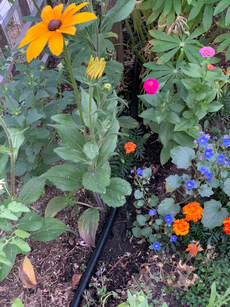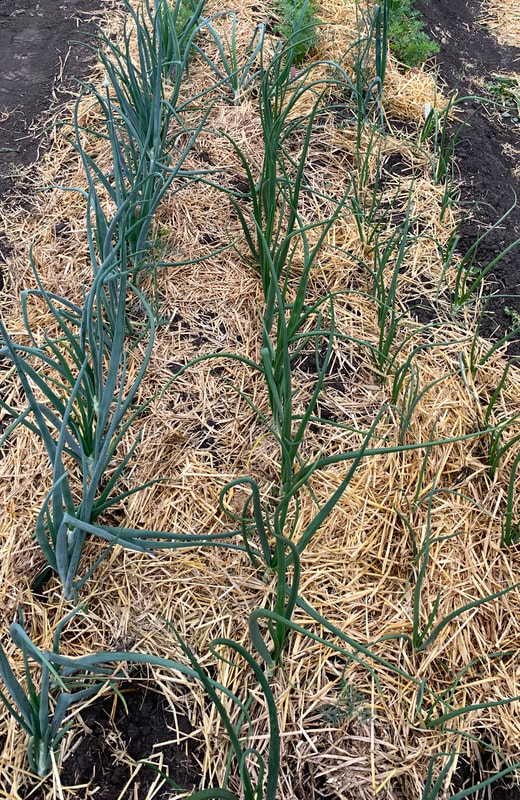
Here are a few tools and tips to help with hot weather, next time it comes around.
Straw mulch for vegetable beds: A small square bale of straw can go a long way to retain some moisture in the ground and reduce huge temperature swings. Garden centres sell out quickly but sometimes you can find an ad on Kijiji. Spoiled or weathered straw is totally fine for the garden if you can find it, and in fact it’s less likely to blow away. If you find straw for next year, be sure to place it inside a large, sealed garbage bag or store it in a mouse-proof location.
Tree leaves are also helpful, especially when partially composted, aka leaf mold: In the fall, fill up garbage bags, dampen the leaves, then tie up the bags and poke some air holes with a fork. Turn the bags a few times before freeze up. In our climate, the leaves take a very long time to decompose, but the leaves can be added to your compost or used as a mulch to feed the soil and retain moisture.
Soaker Hose Irrigation and other Watering Tips
Leaving the garden to go camping is more difficult when heat and drought strike. It helps to have great neighbours who can help with watering, but extra tools and tricks are also important.
Soaker hoses are relatively cost effective and easy to lay out and remove. In my yard, I snaked two joined soaker hoses through the middle of the flower beds all along the edge of our fence line. I normally do not have to worry about the apple and plum tree and the native and non-native flowers there, but in July, the soil was cracking and some plants were showing drought stress. So I attached the soaker hose to one of my large rainbarrels and filled it up with tap water (no rain water was left in July). Once the soaker hoses and the soil were somewhat hydrated, I reduced the flow. It took about 2 days for the barrel to empty out. That was enough water to keep the plants alive and saved me a lot of time watering, especially when my priority is usually the veggie garden and planters.

 RSS Feed
RSS Feed